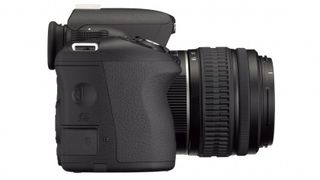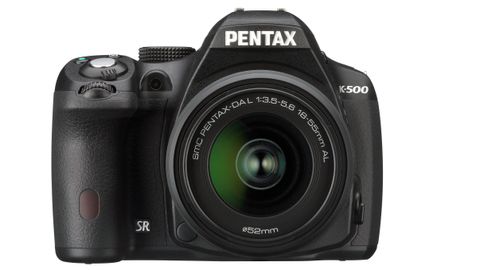Why you can trust TechRadar
Strangely for a camera, the first thing that strikes you when shooting with the K-500 is noise. The 18-55mm DAL kit lens has to make do without an internal autofocus motor, instead relying on the screw-drive from the camera body.
It's actually reasonably rapid to focus, but significantly louder than most lens-based systems, resulting in unsettlingly conspicuous shooting in quiet environments.

But this isn't the biggest problem with the K-500's autofocus system: Pentax's decision to remove any indication of autofocus points from the viewfinder display makes it relatively tricky to establish exactly where the camera is focusing. If you don't have time to review your shots, you'll invariably find some haven't focused quite where you'd intended.
Of course switching to selectable-point autofocus can help, but trying to cross reference the focus points displayed on the LCD monitor with the composition visible through the viewfinder still requires some guesswork. Focus-critical shots therefore become trickier to achieve than with similar cameras.
It's not a major issue, but then it's not the only performance problem. We found the K-500's exposure metering to consistently underexpose under bright skies by around one stop, with occasionally as much as two stops of positive correction needed to retain good shadow detail.
The exposure compensation button is well sited to make these adjustments, while switching to centre-weighted or spot metering can also improve things. But it's a pity matrix metering isn't more reliable.
Fortunately auto white balance has much better accuracy and is rarely fazed by incandescent or mixed lighting environments.
This, combined with the K-500's faithful colour reproduction, enables the default Bright colour preset to produce a punchy yet natural colour palette, including tricky hues like reds and pinks. However if you'd rather change the camera's colour balance to suit your own taste, just fire up the quick settings menu.
Despite having a relatively low outright pixel count, detail is very well resolved throughout the sensitivity range. Granted, you won't get the same cropping potential that higher resolution shots provide, but there's more than enough scope for high quality A3 prints.
At higher sensitivities Pentax's image processing tweaks have kept both luminescence and chroma noise in check right up to ISO3200 and you can even make decent normal sized prints from shots taken as high as ISO6400.
Dynamic range isn't quite as impressive at default settings. Activate the shadow and highlight correction features, though, and high-contrast scenes can be noticeably subdued.
The K-500's multi-shot HDR feature further boosts dynamic range and does so with great results. A choice of exposure variations and tone mapping intensities enable you to achieve subtle contrast enhancements through to more stylistic effects.
The only drawback is around a 10-second processing time, though that's still a marked improvement over the speed of the K5-II's system.
What is a hands on review?
Hands on reviews' are a journalist's first impressions of a piece of kit based on spending some time with it. It may be just a few moments, or a few hours. The important thing is we have been able to play with it ourselves and can give you some sense of what it's like to use, even if it's only an embryonic view. For more information, see TechRadar's Reviews Guarantee.

This Game Boy-styled MagSafe stand just tickled my retro-gaming synapse – now all I need is a matching controller for Nintendo emulators

AI Explorer could revolutionize Windows 11, but can your PC run it? Here's how to check

Netflix's Wednesday season 2 cast clicks into gear with Westworld star addition as Apple's Neuromancer series finds its lead
